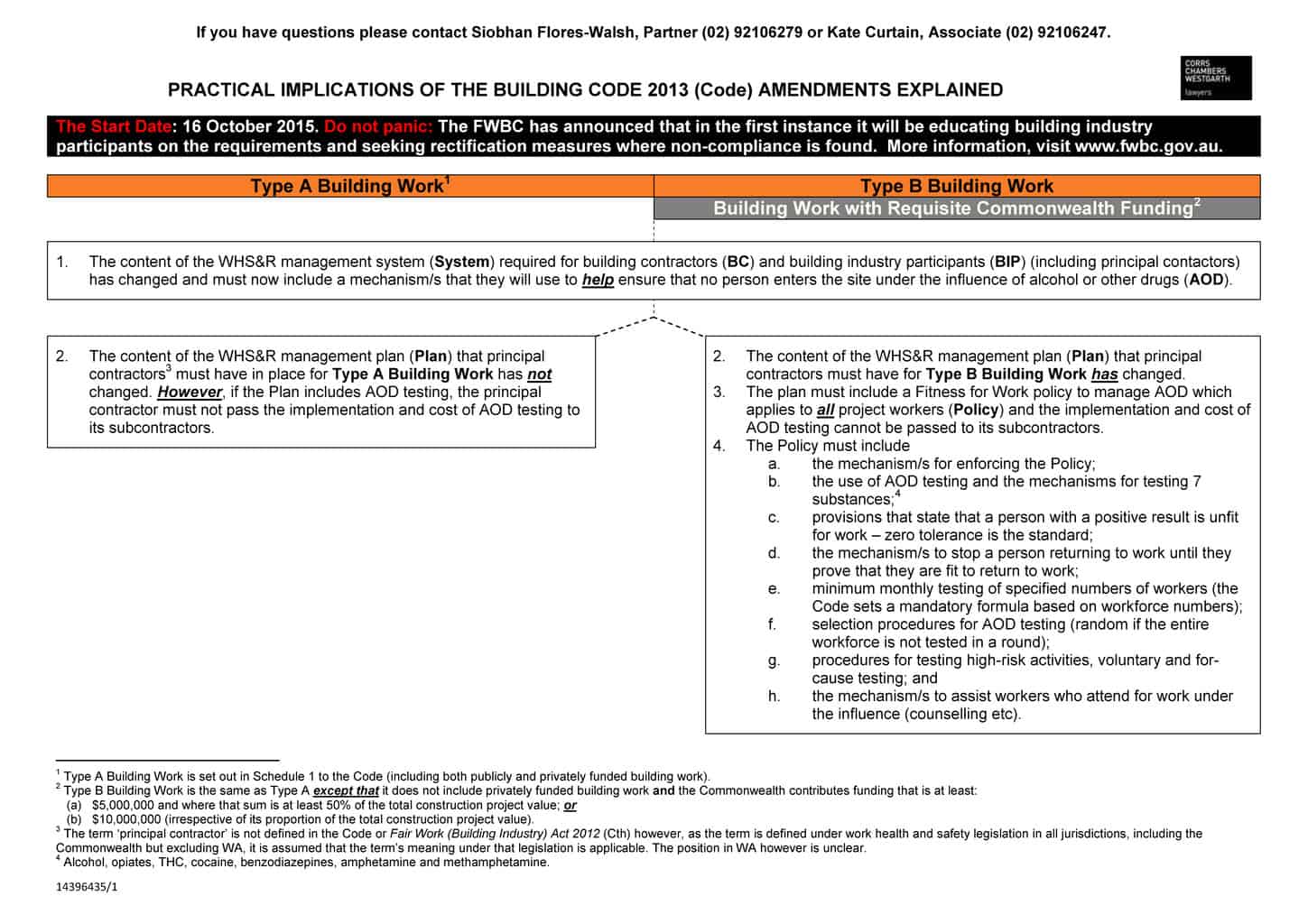Last week the former Workplace Relations Minister, Eric Abetz, informed Australians that amendments had been introduced into the Building Code 2013 concerning drugs and alcohol testing. However an analysis of those amendments shows that the amendments may not achieve what Abetz promised.
Siobhan Flores-Walsh, a Partner with the Australian law firm, Corrs Chambers Westgarth, has provided the following table that summarises a couple of those amendments.
The most significant of these changes is the following amendment to the end of the subsection 20 (1)
“shows the way in which drug and alcohol issues in the workplace will be managed to help ensure that no person attending the site to perform building work does so under the influence of alcohol or other drugs.”
Corrs Chambers Westgarth emphasised the word “help” as the inclusion of this diminishes the requirement to “ensure that no person attending the site to perform building work does so under the influence of alcohol or other drugs”.
Abetz stated that the amendments are intended to ” ensure higher standards of workplace safety for construction sites” but the amendment above seems to weaken the drug and alcohol testing regime!
The amendments also specify seven substances that the testing must address:
- alcohol,
- opiates,
- THC,
- cocaine,
- benzodiazepines,
- amphetamine and
- methamphetamine.
Clarity on what to test for is admirable but such specificity seems to exclude synthetic drugs that have begun to cause concern.
 However, the point remains that other than alcohol, there seems to be little evidence of the safety relevance of these specific drugs and substances on construction sites specifically. As argued previously, this policy comes from an imposition of public health concerns onto the Australian construction industry which is contrary to the push by the government for evidence-based policy. The Melbourne Institute of Applied Economic and Social Research recently advised the government that
However, the point remains that other than alcohol, there seems to be little evidence of the safety relevance of these specific drugs and substances on construction sites specifically. As argued previously, this policy comes from an imposition of public health concerns onto the Australian construction industry which is contrary to the push by the government for evidence-based policy. The Melbourne Institute of Applied Economic and Social Research recently advised the government that
“Australian governments spend many hundreds of millions of dollars a year on industry programs, and make off-budget decisions that impact on Australia’s production and general well-being. However, very few of these policies are based on objective evidence-based policy or are subject to rigorous evaluation.” (page 34)
Flores-Walsh also pointed out to SafetyAtWorkBlog that
“The commentary provided to date does not, in our view, make clear the practical implication arising from the different duties held by a principle contractor in relation to Type A and Type B building work. We think the table makes the difference clear – building contractors may decide to adopt the same approach in relation to both types of building work when it is a principal contractor, however, it may choose to adopt the less onerous approach (that applies to Type A building work) when it is legally allowed to do so.”
It is common for the Conservative side of politics to complain about red tape or the imposition of regulations as the solution to everything but the Building Code amendments are an example of a conservative government emphasising the importance of regulation in this industry sector at the same time as weakening it or providing loopholes. No wonder companies are confused about drug and alcohol testing with this type of regulatory complexity.


Well stated Mervyn. It is also a pity that the constant rhetoric and verbal barrage that the politicians subject us to does nothing but confuse the populas even more and make our workforce even more expensive. No wonder we are out of touch and therefore uncompetative.
Our politicians are so out of touch with the people…
What a great pity that the mistakes of failed Ministers cannot be wiped clean on their departure.